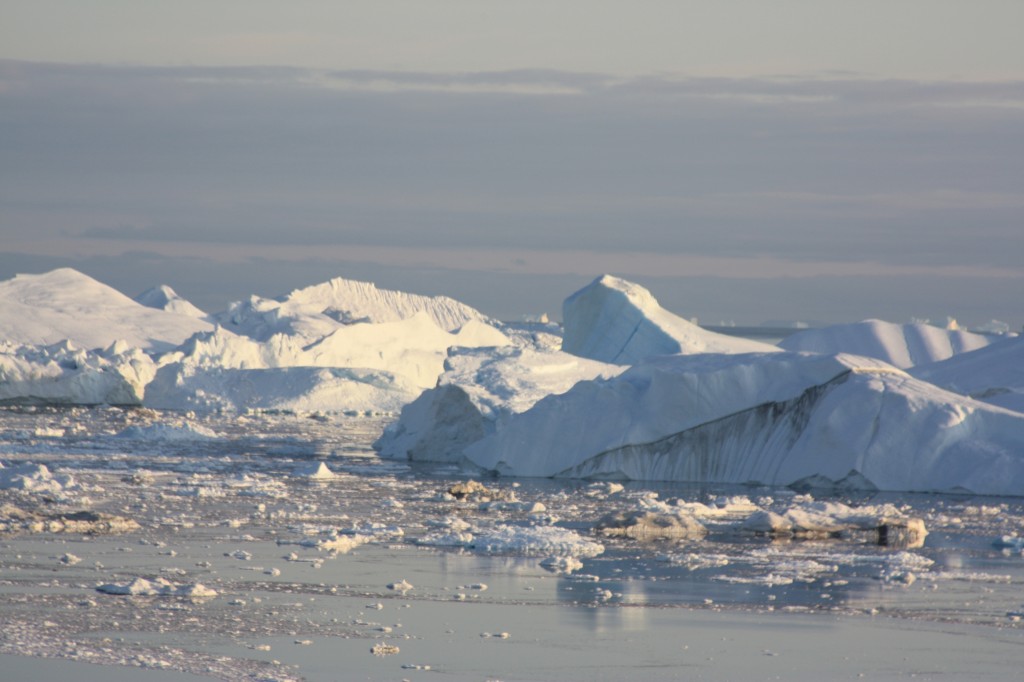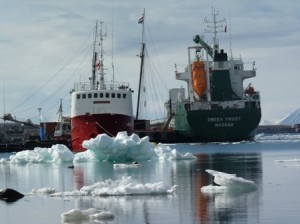Search Results for Tag: Russia
Russia helps China drill deeper into the Arctic
When the new Chinese President Xi Jinping visited Russia as his first official foreign destination last week, one of the agreements signed on the sidelines was a deal between the Chinese National Petroleum Corporation (CNPC) and Russia’s oil company Rosneft, which paves the way for more exploration in the Arctic. The BarentsObserver says the cooperation makes the Chinese concern Rosneft’s third foreign partner in the Barents Sea. The area in question is located to the west of the archipelago of Novaya Zemlya and to the northeast of Gazprom’s Shtokman field. The BarentsObserver says the most likely option is that CNCP will get a 33 percent stake in a joint venture and bear all costs for initial exploration and drilling. The area is one of the least explored areas on the Russian continental shelf. The hydrocarbon potential is believed to be considerable.
![]() read more
read more
Arctic COLD War? – The Russian Perspective
A Russian research vessel accompanied by a nuclear-powered ice-breaker has set off for the Arctic on a 100 day mission to collect data to support the country’s bid to expand its continental Arctic shelf territory. There are 76 scientists on board.
I was interested to read the Russian view of the importance of the Arctic against the background of melting ice on the website of the Voice of Russia.
Germs under the permafrost: too scary?

-Monitoring the permafrost and emissions from it at Zackenberg Station, Greenland, I took the photo in 2009-
„I hope I wasn’t too scary“, said Professor Andrej Grjbovski to me after our panel discussion in Bonn the other night. He works with the Norwegian School of Public Health in Oslo and the Northern State Medical University in his native Arkhangelsk in Russia.
Well I’m not for panic-mongering, but given some of the information our experts were coming out with, maybe you can’t be too scary.
Prof. G. was in Bonn both for the conference at the environment ministry and the public panel discussion. (See links on the Ice Blog 30.11.2010). Amongst other things, he’s involved in a WHO project to monitor the effects of climate change on health in a region of northern Russia.
He was referring in particular to the health dangers from melting permafrost. There are all sorts of dangerous things buried in the permafrost, which come to the surface as it melts. Not for nothing do some people refer to a “timebomb” in the Arctic. After outbreaks of diseases like anthrax, for instance, animals were buried in mass graves. The anthrax spores can survive in there and pose a new threat to health as they emerge again. Yes, Professor, that is definitely in the “scary” category.
But a changing climate poses all sorts of less “spectacular” but nonetheless crucial challenges to health care around the globe. The WHO says the 2003 heatwave killed 70,000 people in Europe. Heatstroke and heart attacks can be fatal to the particularly vulnerable, especially older people. Children and the homeless were also mentioned as amongst the vulnerable population groups.
Floods are another example. Apart from deaths from drowning, there’s the water pollution and fungus left over in the aftermath, which can result in the spread of infectious diseases, respiratory and digestive problems etc.
And of course species are moving to different areas – including, for instance, the mosquito types that are bringing illnesses like Dengue to Europe.
Needless to say – but I’m doing it anyway, sometimes we have to keep reminding ourselves of the obvious – it’s the people in poorer countries or areas who suffer most from the higher health risks through climate change. Germany has an adaptation strategy involving early warning systems for extreme weather events or the spread of infections and flood protection systems. The deputy director of the German meteorology office the DWD Paul Becker told me in an interview capacity building and passing on the necessary expertise to adapt to the health risks posed by a changing climate were the key issues in helping the developing world, whereby finding the necessary funding was probably the main challenge.
Incidentally, on the sidelines of the Cancun talks, Germanwatch published its latest Climate Risk Index. It says more than 650,000 people died in around 14,000 extreme weather events over the last two decades.
"Russian" for Control of the Melted Arctic?

Chaudhary has thanked the Ice Blog for “very cool and also very hot information about ice”. Thanks for your interest Chaudhary, hope you’ll carry on reading and sending me feedback.
Keeping my eye out for the latest “cool and hot” ice info this week, I’m afraid it’s the Russians who’ve been making the most headlines. President Medvedev has told his people to draft a law marking out Russia’s borders in the Arctic. This is all part of an ongoing dispute between various countries on who can lay claim to which parts of the Arctic region. The parties have actually agreed to let the UN decide on this. Russia, Canada, The United States, Norway and Denmark (via Greenland) are the rivals for control. Interest has increased since the US Geological Survey said back in July that some 13% of the world’s undiscovered oil and 30% of its undiscovered gas lies under the Arctic seabed.
It’s a sad state of affairs, but there are actually people looking forward to further melting of the Arctic ice, which could give easier access to more oil and gas. Burning it would then “fuel” the global warming process further and reduce the pressure to increase the use of renewable energy sources.
Representatives of the five “Arctic” countries had a meeting in Greenland last week, but not a lot seems to have come out of it. That’s one of the issues I discussed with Dr. Martin Sommerkorn, WWF’s Arctic climate specialist.
You can listen to or download that longer version of the interview here.

Worrying news. At the same time, the Russians are increasing the pressure to let them exploit the region’s natural resources.
Meanwhile, the official figures on the extent of the Arctic ice confirm the continuing decline.The website of the National Snow and Ice Data Center has the latest information.
Facts and figures on the current state of the Arctic sea ice






















Feedback